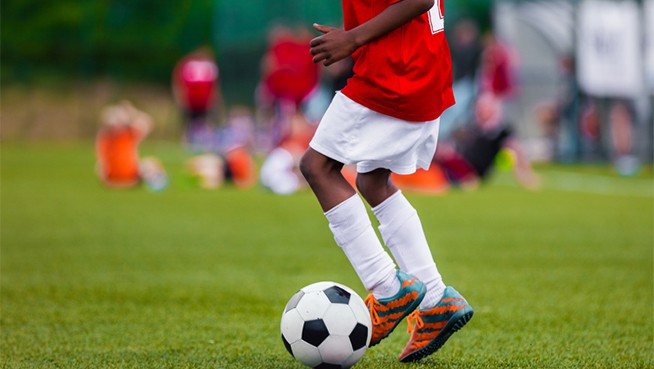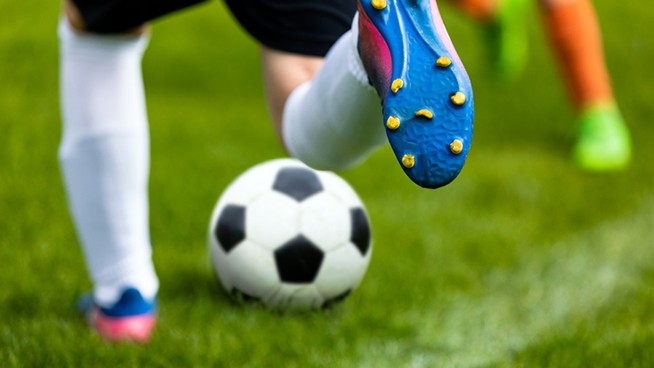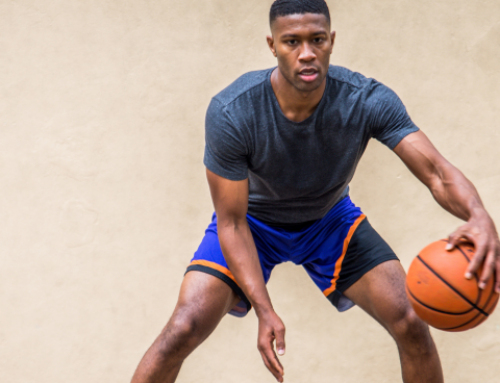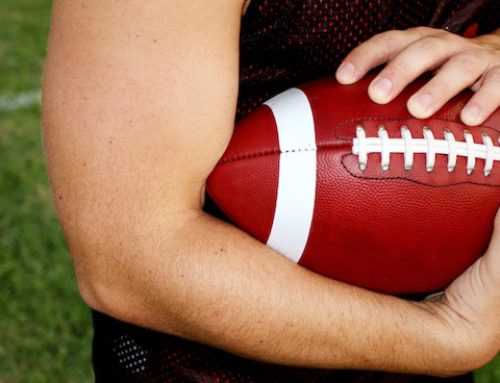Basketball Players Should Learn the 1-Foot Floater to Score More Often
Any basketball player who works with me, regardless of their level or position, spends time working on their floater. The reason is simple: There will always be somebody bigger or more athletic than you trying to prevent you from scoring. The floater, and the 1-foot floater, in particular, is an excellent weapon for neutralizing those disadvantages. If you can read a defender and adjust your arc accordingly, the 1-foot floater can be extremely difficult to block. Another good quality of the 1-foot floater is that it teaches you to develop a soft touch and develops a better sense of court awareness around the rim, which is crucial to any close-range finish.
Let’s talk about the key points to developing a strong 1-foot floater.
First, you’re going to want to develop a high arc on your 1-foot floater. Since the floater is mostly used in and around the paint when there is a defender closing you out, the arc needs to be higher than on a regular jump shot. To help you increase the arc of your floater, think “Elbow-to-Eyebrow” when shooting. For example, if you’re shooting with your right hand, your right elbow should be up near your right eyebrow when you releasing the ball.
Second, you must learn how to execute a controlled deceleration before taking off. When you blow by your defender and get to the paint, your momentum is horizontal. The moment you explode up to jump into your floater, the movement must be more vertical. If your jump is more horizontal than it is vertical, it’s going to be more difficult to control the accuracy of your floater. By decelerating before your takeoff, you reduce the risk of this type of jump. These exercises can help you build better deceleration skills.
Third, you want to practice releasing the ball on the way up. Now, this is not the only way you can score. Jimmer Fredette is a great example of a player who can make 1-foot floaters both on the way up during his jump and on the way down. But releasing your shot while you’re still on the way up requires less energy and often results in a much softer touch, which should result in more buckets. So for young players, I would definitely recommend to focus on shooting when you are going up. You should master fundamental skills first before spending your time training more difficult variations.
Below is a simple drill that you can use in order to develop your 1-foot floater. The drill builds foot speed and first step quickness in addition to training your 1-foot floater. If you can find a partner to push your inside hip as you go through this drill, that will increase the challenge of the exercise and make it more similar to what you’ll likely encounter during a game.
Here are the six main things to focus on during this drill:
- Attack the defender’s feet (real or imagined).
- Make your drive explosive and realistic.
- Utilize a “pound dribble” (a forceful dribble that sees the ball bounce straight up and down) before picking up your dribble.
- Control your deceleration before you jump.
- Try to jump more vertically and less horizontally.
- Shoot on the way up, thinking “elbow-to-eyebrow” to ensure a high arc shot.
The details matter. The difference between an excellent 1-foot floater and an ineffective 1-foot floater is simply the accumulation of those small details done right.
READ MORE:
RECOMMENDED FOR YOU
MOST POPULAR
Basketball Players Should Learn the 1-Foot Floater to Score More Often
Any basketball player who works with me, regardless of their level or position, spends time working on their floater. The reason is simple: There will always be somebody bigger or more athletic than you trying to prevent you from scoring. The floater, and the 1-foot floater, in particular, is an excellent weapon for neutralizing those disadvantages. If you can read a defender and adjust your arc accordingly, the 1-foot floater can be extremely difficult to block. Another good quality of the 1-foot floater is that it teaches you to develop a soft touch and develops a better sense of court awareness around the rim, which is crucial to any close-range finish.
Let’s talk about the key points to developing a strong 1-foot floater.
First, you’re going to want to develop a high arc on your 1-foot floater. Since the floater is mostly used in and around the paint when there is a defender closing you out, the arc needs to be higher than on a regular jump shot. To help you increase the arc of your floater, think “Elbow-to-Eyebrow” when shooting. For example, if you’re shooting with your right hand, your right elbow should be up near your right eyebrow when you releasing the ball.
Second, you must learn how to execute a controlled deceleration before taking off. When you blow by your defender and get to the paint, your momentum is horizontal. The moment you explode up to jump into your floater, the movement must be more vertical. If your jump is more horizontal than it is vertical, it’s going to be more difficult to control the accuracy of your floater. By decelerating before your takeoff, you reduce the risk of this type of jump. These exercises can help you build better deceleration skills.
Third, you want to practice releasing the ball on the way up. Now, this is not the only way you can score. Jimmer Fredette is a great example of a player who can make 1-foot floaters both on the way up during his jump and on the way down. But releasing your shot while you’re still on the way up requires less energy and often results in a much softer touch, which should result in more buckets. So for young players, I would definitely recommend to focus on shooting when you are going up. You should master fundamental skills first before spending your time training more difficult variations.
Below is a simple drill that you can use in order to develop your 1-foot floater. The drill builds foot speed and first step quickness in addition to training your 1-foot floater. If you can find a partner to push your inside hip as you go through this drill, that will increase the challenge of the exercise and make it more similar to what you’ll likely encounter during a game.
Here are the six main things to focus on during this drill:
- Attack the defender’s feet (real or imagined).
- Make your drive explosive and realistic.
- Utilize a “pound dribble” (a forceful dribble that sees the ball bounce straight up and down) before picking up your dribble.
- Control your deceleration before you jump.
- Try to jump more vertically and less horizontally.
- Shoot on the way up, thinking “elbow-to-eyebrow” to ensure a high arc shot.
The details matter. The difference between an excellent 1-foot floater and an ineffective 1-foot floater is simply the accumulation of those small details done right.
READ MORE:












